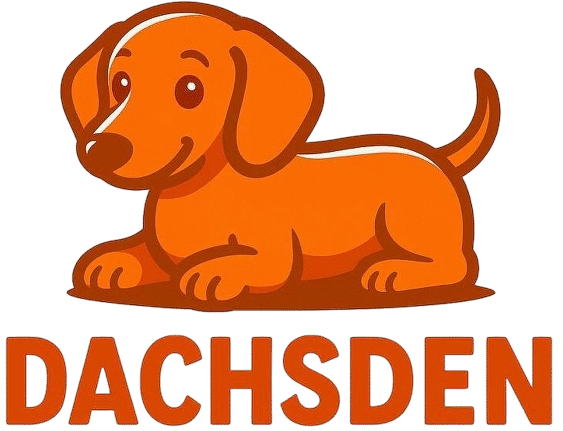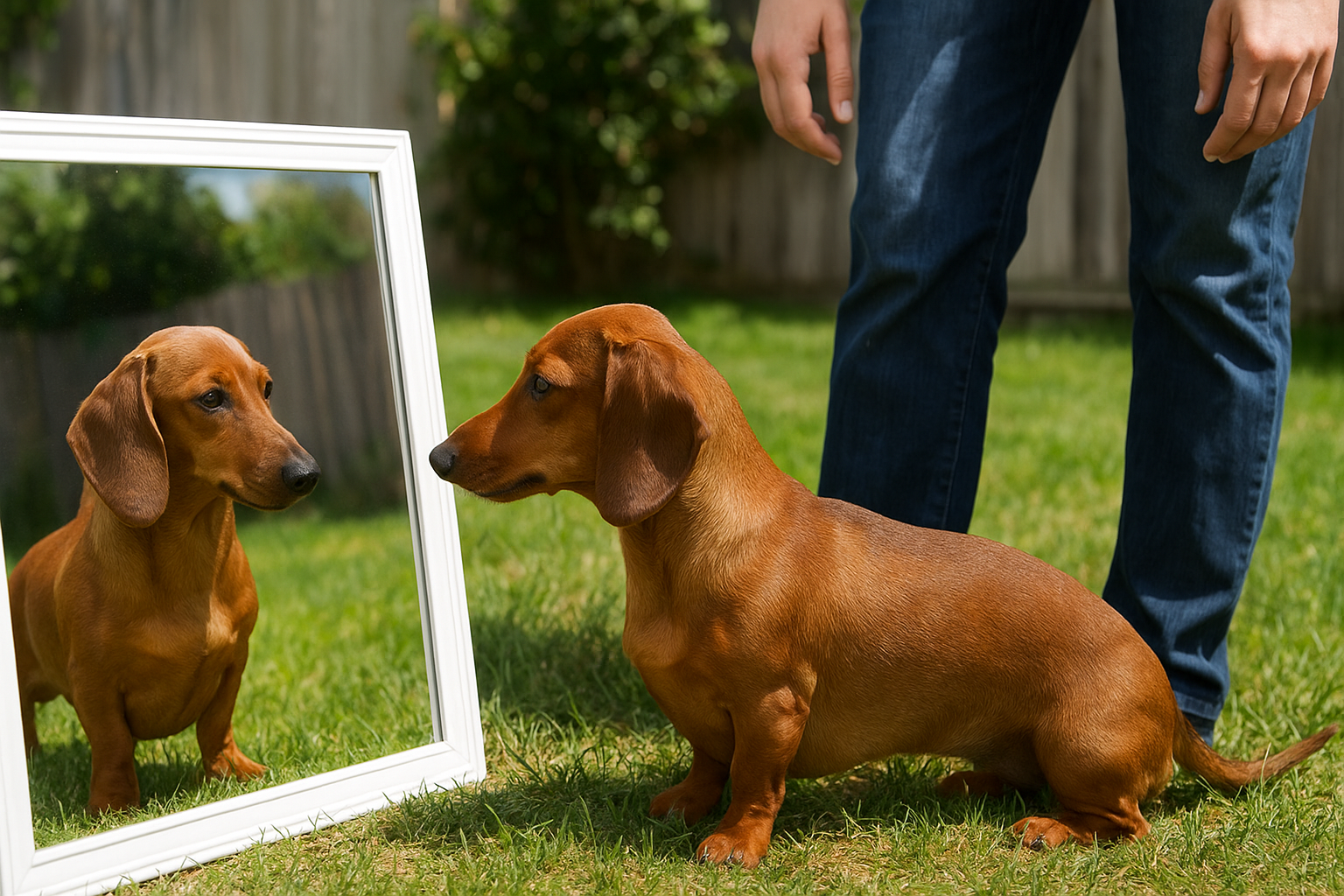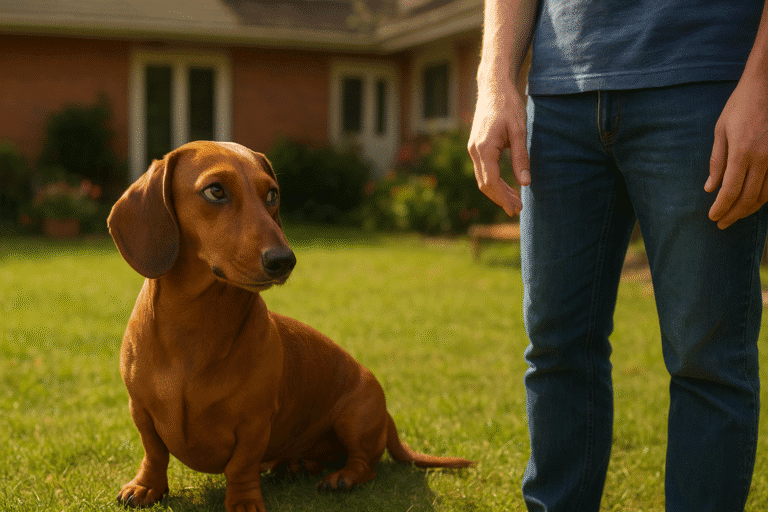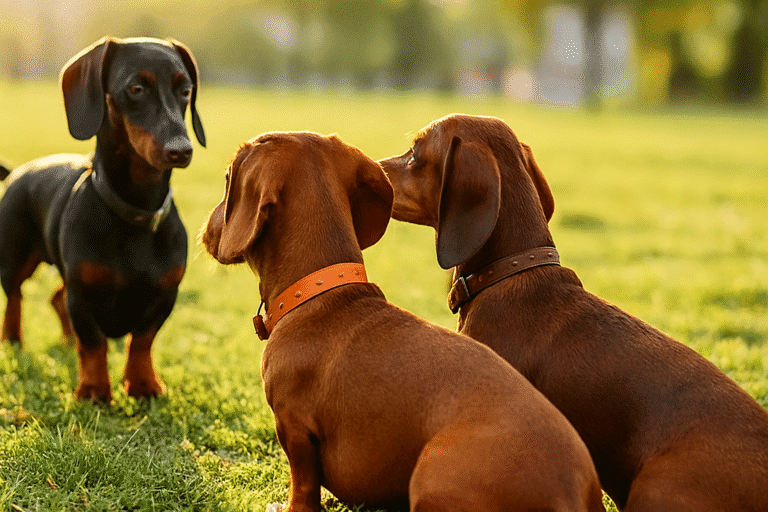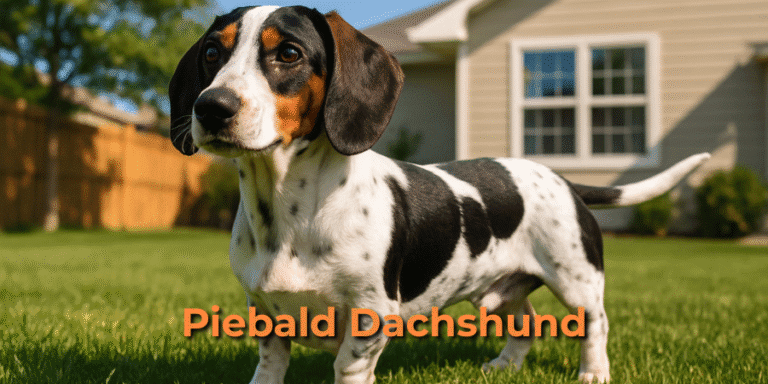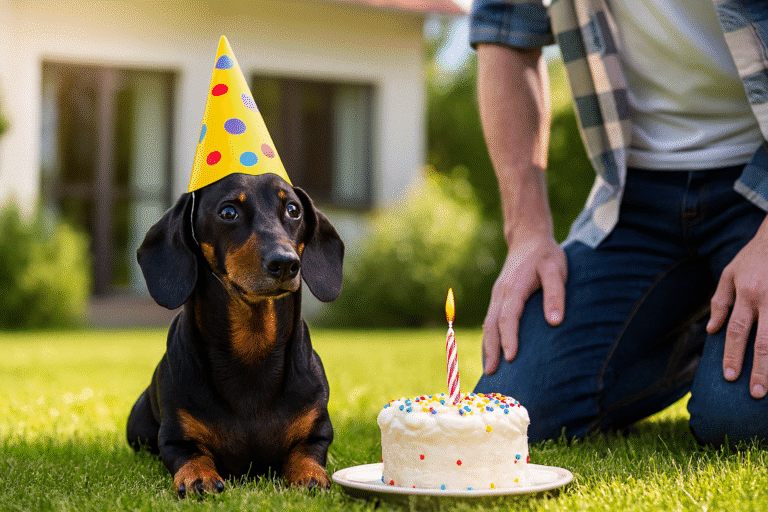Do Dachshunds Recognize Their Reflection?
Have you ever noticed your Dachshund staring at a mirror and wondered what’s going on in that tiny head? Many dog owners get curious about whether Dachshunds recognize their reflection or just see another dog looking back.
Understanding this behavior can tell us a lot about how Dachshunds think and respond to their surroundings. Since they are known for their playful and curious nature, it’s interesting to explore how these clever little dogs react to mirrors and what it says about their awareness and intelligence.
If you’ve ever observed your Dachshund showing strong emotions or acting stubbornly after being scolded, you might also enjoy reading How Long Does a Dachshund Hold a Grudge? for insights into their emotional memory.

Understanding the Mirror Challenge
When we think about our little short-legged companions—the Dachshund—it’s natural to wonder how they perceive the world around them. One question that often comes up is whether they recognize themselves when they see their own image in a mirror.
In other words: does a Dachshund reflection register as “that’s me,” or do they simply see another dog? Because dogs rely on more than just vision, the mirror scenario may present a curious puzzle for them.
The Classic Mirror Test and Its Limits
Researchers have long used the “mirror test” to assess whether an animal recognizes its own reflection—usually by placing a mark on a spot the animal cannot see without a mirror and then seeing if it investigates that mark. But when it comes to dogs, including the Dachshund, this test often doesn’t work as intended.
Dogs typically don’t respond to the mark in the mirror the way primates might. Instead, many either ignore the reflection, react as if it’s another dog, or simply lose interest. The mirror test may not be well suited for animals that don’t rely mainly on sight for recognition.
Why Vision Isn’t Everything for Dogs
It’s important to remember that dogs perceive the world differently from humans. While people depend mostly on vision, dogs use their sense of smell and hearing far more. When a Dachshund sees a reflection, the image lacks scent—the key piece of information dogs use to identify themselves and others.
Because of that absence, the mirror image may not register as “me,” but rather “some dog without a smell.” To a Dachshund, this can make the reflection uninteresting, confusing, or simply irrelevant.
You can also see this sensory-driven behavior when they dig before lying down — a behavior explored in The Truth Behind Dachshunds Digging Before Sleep.
What Happens When a Dachshund Faces Its Own Image
If you place a Dachshund in front of a mirror, you’ll likely see a range of reactions. Some may bark or paw at the mirror, trying to interact with the “dog” they see. Others might tilt their head, sniff the air, or quickly walk away, showing little concern.
In most cases, the Dachshund isn’t recognizing the image as itself—it’s responding to what it perceives as another animal. Because Dachshunds are curious, brave, and scent-driven by nature, their responses can vary from playful to puzzled.
These reactions are similar to the way they approach learning new things—especially when taught with fun and encouragement. If you’re training your dog, you might like How to Teach Your Dachshund Tricks the Fun & Easy Way.
The Role of Breed and Individual Differences
Every dog has its own personality, and Dachshunds are no exception. Their breed history gives them a strong instinct for scent and tracking, which means their nose often leads the way. A mirror that lacks smell may not capture their attention for long.
Age and experience also play a role: young Dachshunds might react with curiosity or barking, while older ones who have encountered mirrors before might completely ignore their reflection. Some dogs simply learn that the “other dog” in the mirror never moves or smells real, so they stop caring.
If you’re raising a young Dachshund, understanding their physical and behavioral changes can help you interpret their reactions better. Check out Dachshund Puppy Growth Spurts & Chart Guide to see what to expect as your pup matures.
Evidence of Self-Recognition in Dogs: Beyond the Mirror
Even though Dachshunds may not clearly recognize themselves through sight, research suggests that dogs can still show a sense of self in other ways. For example, scent-based studies have found that dogs spend less time sniffing their own scent compared to unfamiliar scents, indicating they can tell the difference.
Other tests have shown that dogs can understand their body as separate from objects around them. In one experiment, dogs had to step off a mat to pick up an object attached to it, which they successfully did—suggesting body awareness. These studies show that self-recognition doesn’t have to depend on mirrors or vision.
What It Means for the Dachshund Owner
For Dachshund owners, this insight is both fun and useful. If your dog barks at its reflection, it probably thinks another Dachshund is in the room. If it ignores the mirror, it might understand that the image has no real importance.
Either reaction is normal and nothing to worry about. Knowing this helps you communicate better with your pet. Since Dachshunds are scent-driven and tactile, activities that engage their nose or involve gentle play are far more rewarding for them than mirror games.
If you notice your Dachshund “digging in” blankets or their bed after mirror time, it may tie back to their natural instincts—again explained in Dachshund Burrowing Behavior: Why They Love to Dig In.
The Dachshund Reflection Story
The story of Dachshund reflection isn’t really about mirror recognition—it’s about how these dogs make sense of their world. They may not “see themselves” the way we do, but they are incredibly aware through smell, sound, and touch.
Their reflection might look like another dog, or it might not matter at all. This shows how different, yet equally complex, a dog’s understanding of self can be. It reminds us that intelligence and awareness take many forms—not all of them visible in a mirror.
Final Thoughts
Understanding how your Dachshund reacts to mirrors can give you a deeper appreciation of how they think and perceive. They may not recognize their reflection, but that doesn’t mean they lack awareness. They simply understand themselves and their surroundings through senses that matter more to them.
When you view the world from their perspective—one filled with scents, sounds, and movement—you realize that self-awareness isn’t limited to what we see. It’s about how we connect with the world in our own unique way, just like your clever little Dachshund does every day.
FAQs
Does a dog recognize itself in the mirror?
Most dogs, including Dachshunds, don’t recognize themselves in the mirror — they usually think it’s another dog or lose interest once they realize it has no scent.
Is it true that dogs reflect their owners?
Yes, dogs often mirror their owners’ emotions and energy, picking up on moods like stress, excitement, or calm through tone, body language, and scent.
Do dogs not like seeing their reflections?
Some dogs bark or act curious at first, but most quickly ignore their reflection once they realize it isn’t a real animal — it’s harmless confusion, not dislike.
Can dogs understand the concept of “self”?
While dogs may not recognize themselves visually, studies show they do have self-awareness through scent and body perception, just in a different way from humans.
